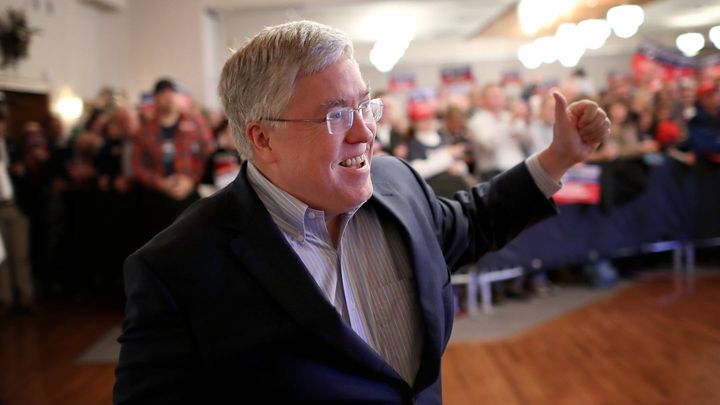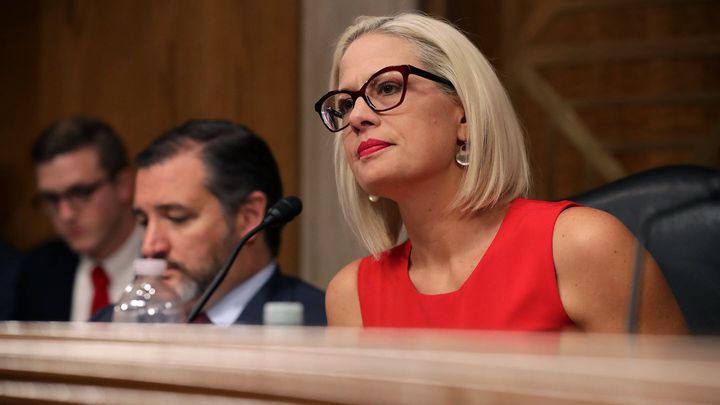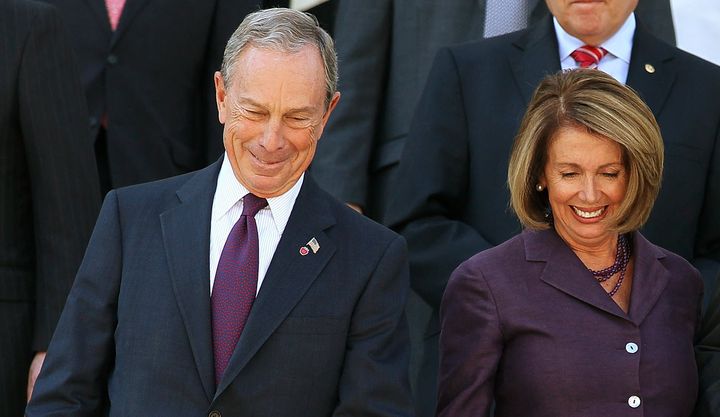A little-known loophole in campaign finance regulations provides yet another opportunity for financial wealth to become political power.
The tactic involves candidates with the personal means to take on significant debt by loaning money to their own campaigns. Wealthy donors who have already donated the legal maximum to the campaign account can kick in yet another contribution for “debt retirement” – marked for repaying the loan from the candidate to the campaign itself.
Campaigns collecting money to retire debt is not new, especially among incumbents – including President Trump immediately after the 2016 election. But during the 2018 midterms debt retirement donations were leveraged in increasingly creative and brazen fashion by a number of high-profile Republican Senate candidates. These include Matt Rosendale of Montana, who lost to Democratic Sen. Jon Tester; Sen. Mike Braun of Indiana, who defeated former Republican Sen. Joe Donnelly; and Patrick Morrisey of West Virginia, who lost to Democratic Sen. Joe Manchin.
Each candidate was a conservative businessman running against a red-state Democrat. Each was a favorite of Trump, who campaigned with all three. And each loaned substantial amounts of their own personal wealth to their campaigns, then exploited the subsequent debt to solicit additional donations.
This can take several forms. One tactic involves loans by the candidate to their campaign committee during the primary. Take Morrisey, the West Virginia attorney general and former K Street lobbyist, who endured a hard-fought primary against former Republican Rep. Evan Jenkins and coal baron Don Blankenship, loaning his campaign hundreds of thousands of dollars in the process.
In an email invitation to a June 2018 private fundraiser, Morrisey’s campaign openly solicited maximum donations to debt accrued during the primary, which had concluded six weeks earlier. Federal law allowed during the midterms donors to contribute a maximum of $5,400 to a candidate: up to $2,700 during the primary and $2,700 for the general. Debt retirement allows donors who sat out the primary, wary, perhaps, with the winner uncertain, to submit a retroactive donation to the primary debt and still chip in for the general.
“Your contribution (up to $2,700) will be designated for the primary election debt retirement,” states the email, which was reported by E&E News. “The next $2,700 will be designated for the general election.”
Political action committees can engage in the same practice under their own limits: $5,000 retroactively applied to the primary and another $5,000 for the general.
“The debt retirement loophole gives candidates more time to solicit the biggest possible contribution from donors,” Andrew Mayersohn, political action committee researcher for the Center for Responsive Politics, told Sludge.
What tends to happen next equates to “a legal form of money laundering,” Brendan Fischer of the Campaign Legal Center told the Associated Press.
While Morrisey mainly used debt retirement donations to recoup funds spent during the primary, Braun and Rosendale pushed the limits of the loophole by receiving debt repayments from their campaign committees and then immediately loaning the exact same amount back to their campaigns.
Rosendale was the first to pull this off, as reported by the Daily Beast. In May 2018, the Montana Republican was paid $32,831 in debt retirement by his campaign, then promptly loaned the exact same amount to his Senate campaign. Less than a month before the election, Rosendale received a $125,000 loan repayment, then proceeded to give the same amount to his Senate campaign five days later. In effect, that’s $125,000 in campaign donations in excess of contribution limits that still made it into Rosendale’s campaign coffers thanks to debt retirements.
Braun pulled the same trick, also according to the Daily Beast. After giving his campaign $1.5 million during last spring’s Indiana Senate primary, Braun received three installments of loan repayments totaling about $93,000. In each case, Braun immediately lent the exact same amount back to the campaign.
And that’s not all: candidates with existing campaign debt from previous cycles go a step further. Rosendale entered the 2018 cycle with $237,000 still owed to him by his federal campaign committee, “Matt Rosendale for Montana,” from an unsuccessful 2014 House bid. Debt retirement donations aimed at debt leftover from previous cycles do not count against the $5,400 individual contribution maximum.
Here’s what that looks like in practice: Rosendale donors Karen Wright, founder of Ariel Corp., which makes natural gas extraction equipment, and her husband, Tom Rastin, each gave the individual maximum. Then, each gave $2,600—the individual maximum from the 2014 cycle—marked for debt retirement. Those funds were then routed through Rosendale himself and re-loaned to the 2018 campaign, effectively allowing Wright and Rastin—both associates of the Koch network of conservative donors—to give $8,000 to Rosendale’s Senate bid, when the legal limit sits at $5,400.
House and Senate candidates who lost in 2018, and who accumulated debt from themselves to their campaigns, can take solace in the fact that this debt can be exploited in future elections, as long as they use the same campaign committee.
“For candidates who carry debt from cycle to cycle, even bigger contributions are possible,” Meyersohn said. “It means that candidates that can afford to take on debt are effectively subject to higher contribution limits than ones that can’t,” he added.
Congress is already dominated by people whose financial wealth does not reflect that of the people they represent, and the debt retirement strategy gives rich candidates like Braun, Morrisey and Rosendale yet another advantage. And the tilt towards financial power works on the other side, as well. It gives influential industries and wealthy donors—the sort of people who get invited to private fundraisers and can afford chipping in an extra few thousand dollars—the chance to stand out from the donor pool. Campaign finance disclosures bear this out.
In the case of Morrisey, mining CEO and GOP megadonor Joe Craft drove the debt retirement push after the primary. Craft, who has been instrumental in many of the Trump administration’s environmental rollbacks, and his company, Alliance Resource Partners LP, combined to give more than 25 percent of Morrisey’s debt retirement donations in the second quarter of 2018, E&E News reported.
Politically connected energy CEOs also donated to Rosendale’s debt retirement, along with several members of the DeVos family, longtime backers of conservative causes.
As Center for Responsive Politics executive director Sheila Krumholz said last year, debt retirement schemes “do not violate the letter of the law, but common sense tells us this is an end around the spirit.”
Still, the debt retirement loophole will likely gape wide for the foreseeable future. The famously gridlocked Federal Election Commission has been unable to punish even simple campaign finance violations over the past decade, let alone address loopholes that allow for dark money or schemes like debt retirement that undermine basic campaign finance regulations like contribution limits.
Related:



